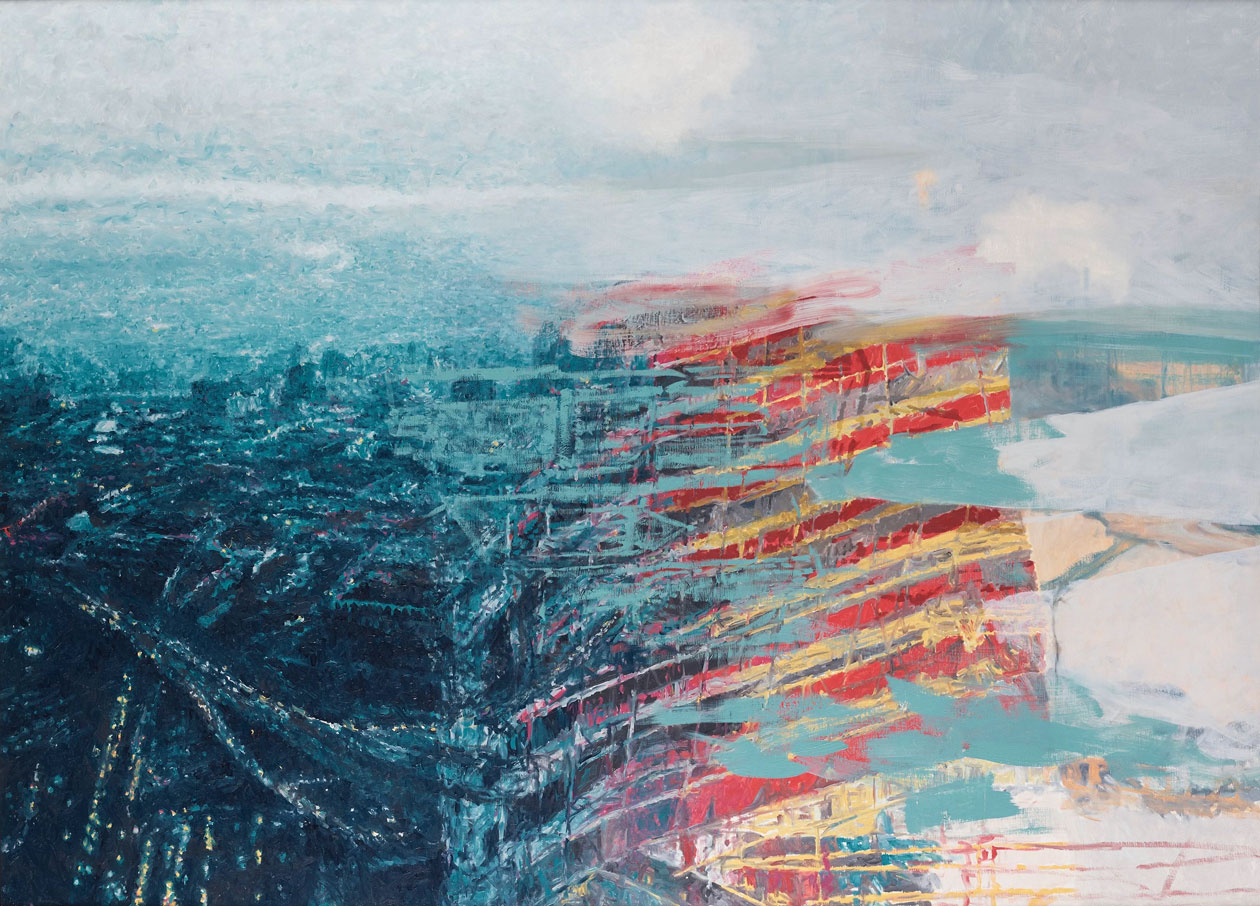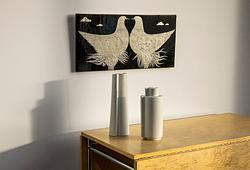Bukowskis presents Ola Billgren at this spring’s Contemporary Art & Design
Ola Billgren, 'Terrain Vague'
Painting has been declared dead several times over the last fifty years and has also been accused of being an art form that has been part of a patriarchy. But something has happened in the process and today the position of painting is no longer questioned, but has been strengthened or even gained a cult status. This new status is closely linked to a number of older painters who are now characterized as painting princes. I am thinking of the artists Cy Twombly and Sigmar Polke, but perhaps even more so of Gerard Richter who is now celebrated worldwide as a statesman. Richter has always been considered a "difficult" painter, with an impressive but difficult to master range in his pictorial universe. Nowadays, complexity has become something of a badge of honor for his greatness.

› Signed Ola Billgren and dated 1987 verso. Canvas 190 x 265 cm.
If I were to apply this reasoning to Swedish conditions, it is Ola Billgren who comes closest to Richter's position. Some people probably think it is dangerous to make a comparison between them, as there are some who consider Billgren a Richter epigone, but then they have not done their homework. Certainly there are similarities, but much of these similarities are a parallel activity that can be explained by the similarities of the zeitgeist. It is typical of our Swedish mentality that our "heroes" must have role models in the wider world.
Billgren has the same impressive painterly range in his production as Richter, which has meant that, like Richter, he has been considered a 'difficult' painter. But there is much evidence to suggest that today he has achieved a position similar to Richter's, even if this does not mean that he is becoming an instant celebrity. But the appreciation of him has probably never been as great as it is today.
Like Richter, Billgren has a long relationship with painting that goes back to the late 1950s. His breakthrough, like Richter's, came in the early sixties when the media's expansion of the world into a global village radically changed the perception of reality. But neither Billgren nor Richter got stuck in the virtuoso neo-realist painting. The Billgrens looked further into the history of painting with a problematization of painting that questioned rather than confirmed. During the seventies, Billgren devoted much energy to investigating the basic structures of classical painting, both in terms of motif and painting. He devoted considerable energy to studies of painters as diverse as Hammershöi, Hopper, Titian and Bonnard. But the result was never pure references, but always merged into syntheses in Billgren's own spirit.
During the 1980s, Billgren came to concentrate his interest on Romanticism and its emotional hub. However, it was always a Romanticism in quotation marks that examined and deconstructed Romanticism's approach rather than its emotional timbre. A central motif was the landscape, but hardly the purely Romantic landscape. Billgren's landscapes were composed of photographic collage elements that complicated the experiential aspect of the landscape. In the form of large panoramic paintings, it was not primarily the natural landscape, but the urban landscape that was subjected to his dissecting scrutiny.

The painting Terrain Vague (1987) is an obvious signature painting in Billgren's production from the late 1980s. Like several paintings from the same period, it looks down from a great height. Unlike View from a Cathedral I (1987) and II (1988), it is not a static vantage point like a church tower. This is a moving viewpoint that is easily identifiable as an airplane. From the constant movement of the airplane one looks down on the metropolis with its complex infrastructure of intersecting roads and architectural environments. It is a metropolis that stretches as far as the eye can see and it is difficult to get a sense of its structure. It is probably this spatial disorientation that has given the painting its title Terrain Vague after the French term for an area that has no clear identity. It is an area on the borderline between city and country. In other words, it is a kind of limbo that is neither one nor the other. In a 1995 essay, architectural theorist Ignasi de Solà-Morales writes that a city can never be understood in its complexity without the camera. However, it is not the city we see, but the image of the city, but with the help of the image we can form an idea of the city's topography. In a figurative sense, terrain vague can also be understood as a transitional phenomenon between a physical and a mental landscape or as a kind of intermediate state between wakefulness and sleep. In other words, the feeling that often occurs when you are in an airplane going up or down between two different places. It is a state where one has lost all sense of place, but at the same time retains a kind of emotional perception that might be called the soul of the place.
– Text by Bo Nilsson
The work is one of the many highlights being sold at Bukowskis Contemporary Art & Design this spring.
Contemporary Art & Design
Viewing: April 19 – 23, Berzelii Park 1, Stockholm
Open: weekdays 11 am – 6 pm, weekends 11 am – 4 pm
Auction live: April 24 – 25, Arsenalsgatan 2, Stockholm
To the work
Read more about the auction

Requests & condition reports Contact specialist

Stockholm
Andreas Rydén
Head Specialist, Art, Deputy Managing Director
+46 (0)728 58 71 39

Stockholm
Louise Wrede
Head of Art Department, Specialist Contemporary Art, Private Sales
+46 (0)739 40 08 19

Stockholm
Karin Aringer
Head Specialist Contemporary Art and Photographs
+46 (0)702 63 70 57























